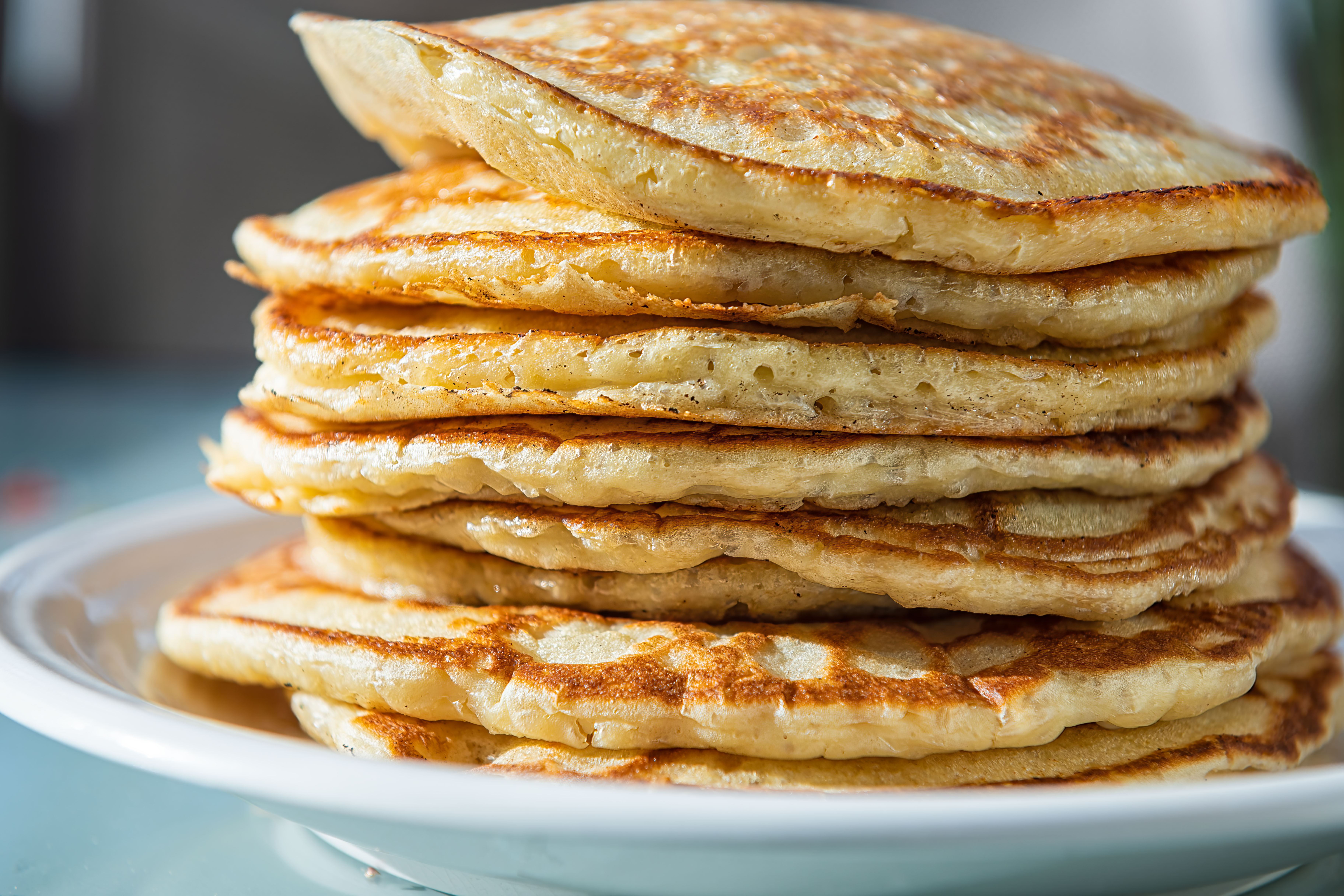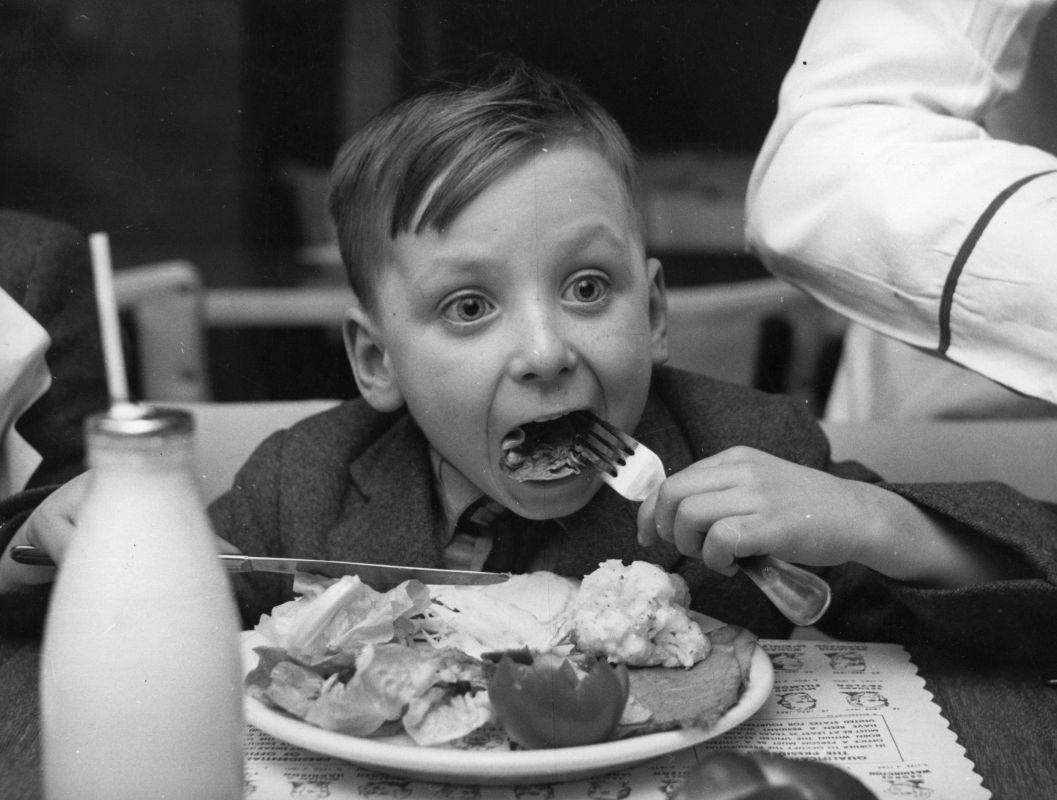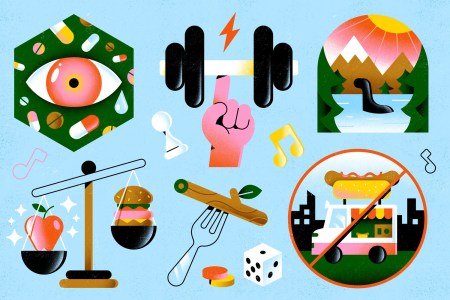The mythical “clean-plate club” has a sound mission statement: Finish the food that’s put in front of you, so nothing goes to waste. But what if there’s way too much food in front of you, for more or less every single meal, to the tune of nearly 3,600 calories a day?
American adults have little trouble licking their plates clean — research published in the International Journal of Obesity a few years back indicates that we finish 92% of whatever food we feed ourselves.
Yet those plates are sagging under the weight of portions that have ballooned in size over the last 50 years. Bagels, burgers, tubs of theater popcorn, trays of Thai takeout…it’s all bigger than it used to be. And if your stomach is trained to expect a certain amount of food (ultra-processed and calorically-dense food, mind you), it’s only natural that you’ll over-index when cooking for yourself, too.
How to get your portions back under control? This guide is a good place to start. From adopting a Confucian technique at dinnertime to taking a stand on infamous cheat meals, here’s what you need to know.

Hara hachi bun me
That’s Japanese for “Eat until 80% full.” It’s a common pre-meal intonation in Okinawa, one of the planet’s five “Blue Zones” (a term that describes regions with an unusually high concentration of centenarians), and not so coincidentally, a place where daily caloric intake clocks in under 2,000.
Calorie-counting is a fraught exercise, which too often backfires and fosters unhealthy eating habits, but those who observe the 80% rule aren’t exactly fretting over labels or weighing portions on digital kitchen scales. They’re listening to their bodies, practicing one form of a concept that’s now popularly referred to as “intuitive eating.”
It’s easiest to practice the 80% rule during a slate of standard, weeknight dinners. This a subjective concept, obviously — despite the official-seeming percentage — but it’s one you can get used to by paying close attention to your stomach throughout a meal. Slow down, eat with friends or family (instead of in front of the TV), and once you’re feeling close to satisfied, call it. If you’re really hungry later on, fair enough, but at least give yourself the chance to eat a portion that gets you right around where you need to be.
Restaurants beware
They know what they’re doing: Butter, salt, and enough food for two-and-a-half dinners, not just one. In a day and age where standing out on Instagram is more important than ever, some establishments have blown past even the conventionally-oversized, American portion allotments. (Every day or two I see a food vlogger muscling through a plate of chicken and waffles that would make even Homer Simpson happy.)
Going out to eat can torpedo any semblance of control over portion sizes, and in some respects, that’s okay — like feasting on one’s birthday, or over the holidays, it’s important to embrace eat-happy events. Playing mental word association with “big serving” and “I fucked up” is a useless, self-defeating exercise. Life is hard. You’re allowed to seek out good food.
But remember: if so inclined, you’re also allowed to ask your server for a half-portion. Consider: checking the menu before you go, pairing a couple sides instead of electing an entree, ordering before everyone else (so you can remain steadfast in your decision!) having a thoughtful snack at the house, saying yes to salad or soup (giving you a bit of a runway to suss out how hungry you are), or sharing with a partner.
Eat colorfully
It’s arguably the most important nutritional credo out there — if your plate is always some shade of caramel brown, you’re likely neglecting some food groups and leaning a little too heavily on fried/frozen/processed fare. Qualifying for “colorful” eating, meanwhile, requires a little more than squirting various sauces on those beige plates; it means embracing greens, grains, seeds, beans, peas, lentils, nuts and fruits.
But embracing diverse dishes, and keeping them small and sequential, can completely trivialize dinner…in a good way. Why not make a few tiny dishes (tapping into the tapas philosophy) instead of filling out the plate around a cut of meat? For example: put together a tasting menu of blistered tomatoes, then oven-roasted asparagus, then mushroom risotto, then seared scallops. Eat as cooks eat, if the spirit moves you, cooking as you go. It’ll help foster an appreciation for different flavors and how much you need to eat to feel full. Plus, you’ll probably become a better cook by accident.
On cheat mealing
It’s a tricky one. Cheat meals are fun (and again, all over Instagram), but as nutritionists are quick to point out, tend to function as a sort of permission slip for extreme overconsumption — the idea being that certain foods are seen as bad, until one holy day where you’re allowed to binge as much of them as possible (usually because you’ve conquered some physically grueling challenge).
But the practice can lead to weight cycling, which, over time, can feed into feelings of anxiety and depression. If you’re not The Rock, or Chris Hemsworth, with a full team dedicated to helping you stay in shape, the issue will only spiral.
From a portion-size perspective, consider why you’re inclined to “cheat” on a meal in the first place. If you just finished a marathon or multi-day hike, fair enough. (You’ll probably puke most of it out anyway, fair warning.) But if you’re craving a Medieval feast-level cheat meal every time Sunday rolls around, that might indicate you’re not fueling yourself properly throughout the week. A compromise? Try and assuage the craving without going crazy on calories. See what a burger and fries does for you. Don’t start with two burgers, large fries, a shake and chicken tenders.
100 Ways to Live to 100: The Longevity Fitness Guide
Coastal living, board games, not eating hot dogs. It’s all in here.To skip or to scarf
Intermittent fasting is legit. Not because a YouTuber told you their exact 8:16:8 (or whatever) breakdown is “the only way to hack into a fasted state and achieve god status here on Earth,” but because in general, we all eat too much, and occasionally bypassing meals is a great way to cut back on calories. (Plus: there are genetic benefits to being hungry.)
But similar to hitting Trader Joe’s on an empty stomach, it’s possible to overdo it when hungry and prepare/order way too much food, which simply isn’t going have a positive impact on portion control. When experimenting with intermittent fasting, pay attention to what skipping a meal does to your energy level and mood; how that, in turn, impacts your ability to get work done or a workout in; and how rational you feel when finally reaching the hour of your next meal.
It can help to know exactly what you’re going to eat to break the fast ahead of time — and maybe you get into a habit of readying that meal or snack ahead of time. But if you start to feel like you’re forcing the issue, or that the chosen time of the day makes skipping a meal really difficult then perhaps it isn’t worth it. Similar to hara hachi bun me, this is a situation where developing a subconscious understanding of fullness will pay dividends for decades to come.
Fill up!
Grazing had a moment in the mid-aughts, then turned woefully obsolete when intermittent fasting burst onto the scene. Who cares — pay no mind to the schizophrenic jockeying of poppy food trends. If snacks here and there throughout the day keep your energy up, and crucially, keep you from serving yourself too much food when it’s time for a “real” meal, then that’s perfectly okay.
Just keep it simple. Go for sliced apples, whole grain toast, avocados in literally any form, almonds and dried fruits. I personally make a smoothie with peanut butter, two bananas and oat milk every single day. That’s all I really want in the morning, alongside a few cups of water and an iced coffee, and once I get a little work done, it’s time for lunch. Find what works for you, and when in doubt, drink more water and eat more fiber. Your portions later in the day will reflect that sensibility.
Mama Earth
Americans throw out 80 billion pounds of food each year. Up to 40% of the United States food supply ends up in the garbage. That’s my fault, that’s your fault, that’s everyone you know’s fault. We all do it and it sucks. If you want to be part of the solution, learn your true portion size. That way you can purchase and cook what you know you’ll actually want to eat — and stop yourself from throwing the rest away (or doing that thing where it sits in a container for three days…and then you throw it away while holding your nose in shame).
Smaller plates?
Size matters — when it comes to tableware. Research has confirmed that people eat larger servings of food when they’re eating from larger plates or bowls, and alarmingly, they don’t even realize they’re doing it. This is perhaps the most stupidly simple way to get a handle on your portion control; just put your first serving on a tiny plate. If you want more, so be it. Put on a little more. And go from there. Trust us: you will be full — that’s to say, 80% of the way there — in due time.
The Charge will help you move better, think clearer and stay in the game longer. Subscribe to our wellness newsletter today.
























